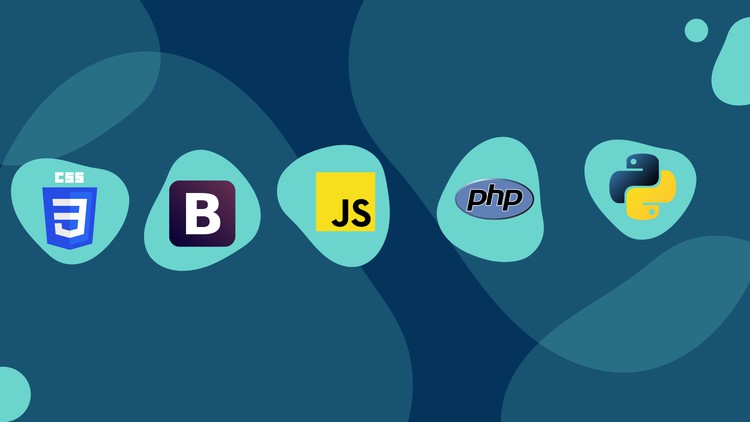CSS, Bootstrap ,JavaScript, PHP And Python Full-Stack Course
Learn Full Stack Course CSS, Bootstrap ,JavaScript, PHP And Python Complete Course
4.50 (58 reviews)

5 634
students
11 hours
content
Feb 2022
last update
$19.99
regular price
Why take this course?
¡Hola! It seems like you've outlined a comprehensive curriculum that covers JavaScript, PHP, and Python programming languages. Here's a breakdown of what each section of your course includes, along with some insights on how to approach learning these languages:
JavaScript Course Contents:
- JavaScript Introduction: Understanding what JavaScript is and its role in web development.
- Arrays: Learning to work with lists and sequence data.
- Variables: Getting familiar with variables and their uses in storing data.
- Functions: Writing functions to facilitate code reuse and modularity.
- Objects: Understanding JavaScript's object-oriented features.
- Control Statements: Using
if,else, and other control flow statements to direct execution. - Cookies: Handling client-side data storage with cookies.
- Loop Statements: Iterating over data with
forloops,whileloops, etc. - Data Structures: Working with complex data structures like objects and arrays.
- Error Handling: Managing runtime errors gracefully.
- Regular Expressions: Searching, matching, and replacing text patterns using regex.
PHP Course Contents:
- PHP Basics: Introducing the basic syntax, data structures, and web development concepts with PHP.
- Operators: Understanding different types of operators in PHP.
- Arrays: Handling arrays for data organization and manipulation.
- Conditional Statements: Using
if,else if, andelseto make decisions in your code. - Loops: Iterating over collections with
foreach,for, andwhileloops. - Functions: Writing reusable functions for code modularity.
- Decision Making: Using PHP's control structures for making choices.
- File Input and Output: Reading from and writing to files.
- Web Concepts: Understanding client-server communication, HTTP methods (GET/POST), and redirects.
- MySQL API: Interacting with databases using PHP.
- Cryptographic Functions: Using PHP's cryptographic functions for secure operations.
- Scalar Declaration: Declaring single-valued variables in PHP.
Python Course Contents:
- Introduction to Programming and Python: Overview of programming concepts tailored to Python.
- Core Python Concepts: Understanding conditionals, loops, variables, and functions.
- Python Code Execution: Learning different methods for running Python code.
- Program Design: Writing complete Python programs using built-in data structures like lists, dictionaries, sets, and tuples.
- Custom Functions: Writing your own functions to perform specific tasks.
- File I/O: Reading from and writing to files in Python.
- Data Types: Exploring Python's various data types (e.g., integers, floats, strings, lists, tuples, sets, dictionaries).
To get the most out of these courses, it's important to:
- Practice regularly: Apply what you learn by writing code and experimenting with different examples.
- Use resources: Supplement your course with online tutorials, documentation, and community forums.
- Build projects: Start small and gradually increase the complexity of your projects as you become more comfortable with each language.
- Understand concepts: Don't just memorize syntax; understand the underlying principles that make each language work.
- Iterate and improve: Refactor your code, learn from mistakes, and continually look for ways to optimize and refine your understanding and skills.
Remember, programming is a journey of continuous learning and practice. Each of these languages has its own strengths and use cases, so you'll be well-equipped to tackle a variety of projects once you've mastered them. Good luck!
Loading charts...
Related Topics
4401034
udemy ID
17/11/2021
course created date
23/11/2021
course indexed date
Bot
course submited by